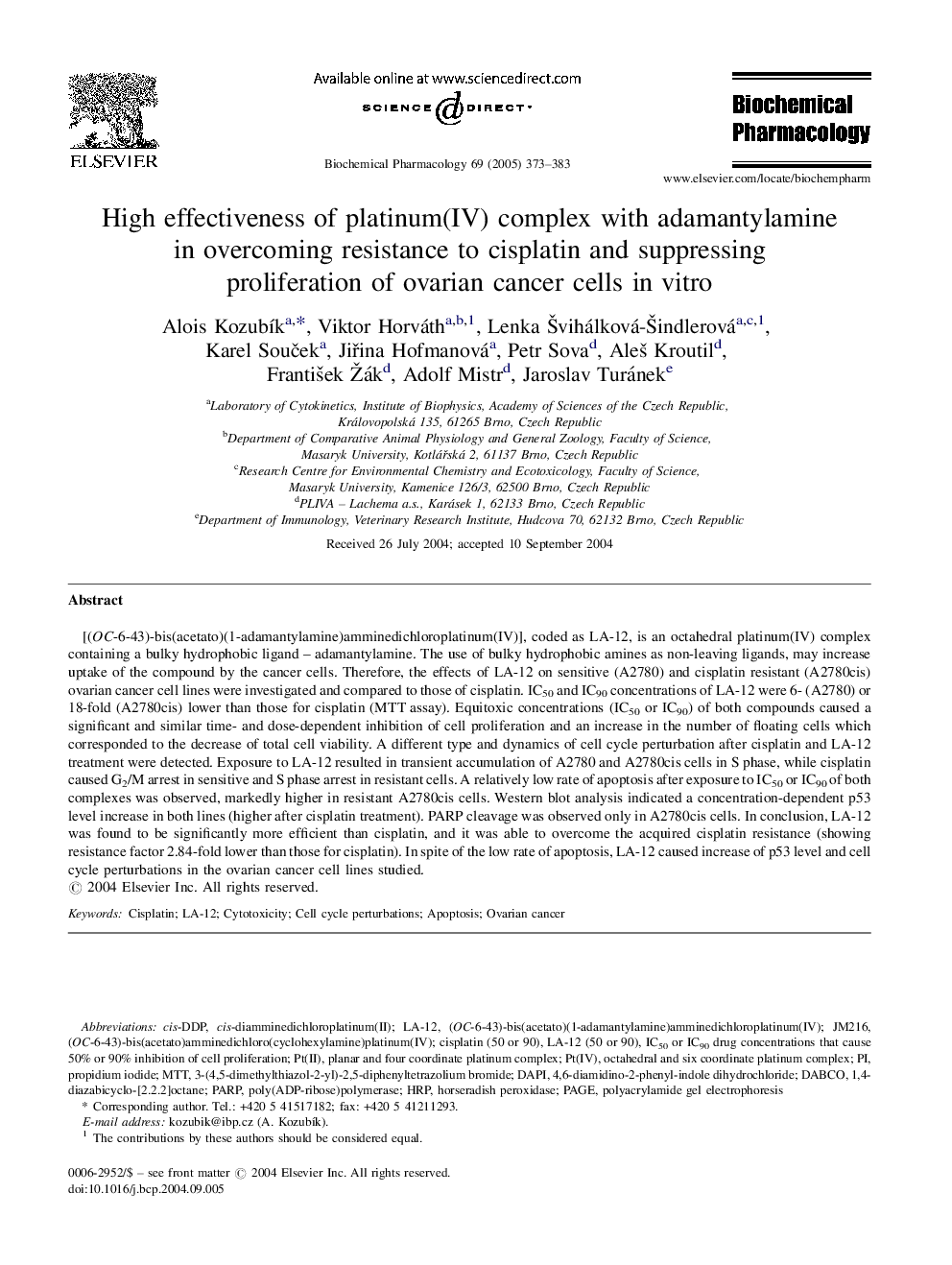| Article ID | Journal | Published Year | Pages | File Type |
|---|---|---|---|---|
| 9002168 | Biochemical Pharmacology | 2005 | 11 Pages |
Abstract
[(OC-6-43)-bis(acetato)(1-adamantylamine)amminedichloroplatinum(IV)], coded as LA-12, is an octahedral platinum(IV) complex containing a bulky hydrophobic ligand - adamantylamine. The use of bulky hydrophobic amines as non-leaving ligands, may increase uptake of the compound by the cancer cells. Therefore, the effects of LA-12 on sensitive (A2780) and cisplatin resistant (A2780cis) ovarian cancer cell lines were investigated and compared to those of cisplatin. IC50 and IC90 concentrations of LA-12 were 6- (A2780) or 18-fold (A2780cis) lower than those for cisplatin (MTT assay). Equitoxic concentrations (IC50 or IC90) of both compounds caused a significant and similar time- and dose-dependent inhibition of cell proliferation and an increase in the number of floating cells which corresponded to the decrease of total cell viability. A different type and dynamics of cell cycle perturbation after cisplatin and LA-12 treatment were detected. Exposure to LA-12 resulted in transient accumulation of A2780 and A2780cis cells in S phase, while cisplatin caused G2/M arrest in sensitive and S phase arrest in resistant cells. A relatively low rate of apoptosis after exposure to IC50 or IC90 of both complexes was observed, markedly higher in resistant A2780cis cells. Western blot analysis indicated a concentration-dependent p53 level increase in both lines (higher after cisplatin treatment). PARP cleavage was observed only in A2780cis cells. In conclusion, LA-12 was found to be significantly more efficient than cisplatin, and it was able to overcome the acquired cisplatin resistance (showing resistance factor 2.84-fold lower than those for cisplatin). In spite of the low rate of apoptosis, LA-12 caused increase of p53 level and cell cycle perturbations in the ovarian cancer cell lines studied.
Keywords
Related Topics
Health Sciences
Pharmacology, Toxicology and Pharmaceutical Science
Pharmacology
Authors
Alois KozubÃk, Viktor Horváth, Lenka Å vihálková-Å indlerová, Karel SouÄek, JiÅina Hofmanová, Petr Sova, AleÅ¡ Kroutil, FrantiÅ¡ek Žák, Adolf Mistr, Jaroslav Turánek,
